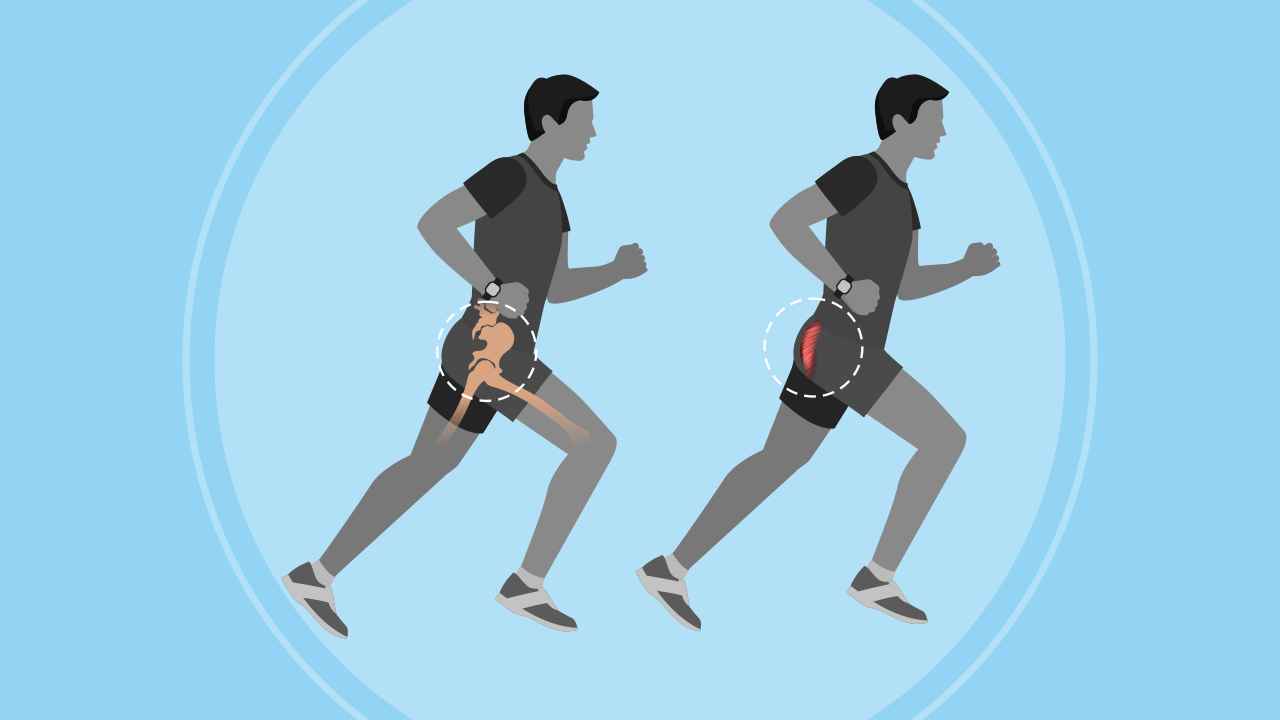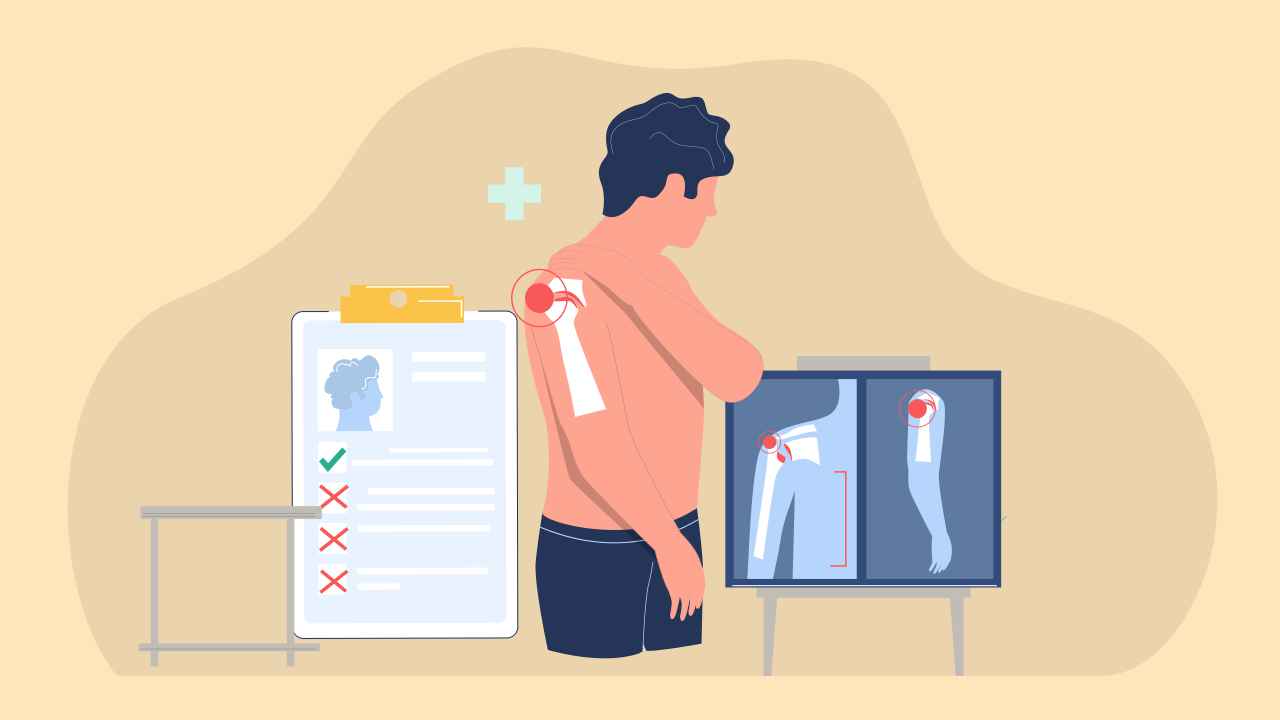
Coming Back from an Injury? Here’s What You Should Remember

An injury can not only be painful, it can also get quite frustrating as it tends to derail your training and workout plans. This holds true for everyone, be it competitive athletes who are eager to get back in the game or average gym-goers who are doing their best to establish a well-defined exercise routine.
Recovering from an injury is quite a challenging process. So, it is vital that you go through this procedure with a clear plan and extreme care. Certainly, you do not want an injury to recur or worsen because of doing excessive exercises quickly.
Also Read: How to Train Safely and Avoid Injuries at Home
No matter what type of injury you have suffered — whether it is a muscle strain that happens during a workout or something like tendonitis that builds up over time — it is essential that you give your body the time it needs to heal.
Here are a few steps to recover from an injury and get back on track.
1. Consult with your doctor
Before restarting an exercise program after injury, consult your doctor so as to not exacerbate an existing injury, or end up aggravating a short-term problem to a long-term medical issue. Depending on the type and extent of injury, your doctor may prescribe rest or refer you to a specialist.
In certain cases, you may also need to meet a physical therapist or personal trainer for rehabilitation. Follow your healthcare team’s medical recommendations for return-to-activity and continue any rehab program, as prescribed by your physical therapist.
2. Focus on your form
Once your healthcare team has confirmed that you are fit enough to restart exercising, take a step back and reconsider the workouts that you were performing prior to the injury. If you are a competitive athlete or a hardcore fitness enthusiast, you may find it difficult to reduce the intensity levels. However, you may need to do this to ensure safe workouts post-injury.
Analyze mindfully how, when, and why you got injured and how you may do things differently once you recover. For example, did you push yourself too hard or ignore your body’s signals when it instructed you to stop or slow down? Take a moment and think of the lessons that you can learn from the experience, which resulted in injury.
During all exercises, focus on maintaining good posture, performing movements with proper form, and avoiding compensating for your injury
For instance, you may favor an injured knee during a squat exercise by putting a bit more of your weight on the opposite leg. Eventually, this may result in an imbalance and lead to another injury.
Returning safely to strength training may require you to reduce the amount of weights that you were exercising with earlier. Also, you may have to limit the range of motion on your movements to protect injured joints. At times, you may feel that you are taking a step backward by making these adjustments. However, you need to reframe the situation as one that will help you get back to your routine safely.
Start slowly and have a well-crafted plan of how you are going to progress in your training. Develop this plan with the help of a physical therapist and a personal trainer.
3. Extend your warm-up
You may also consider increasing your warm-up period, which is the first 10 to 15 minutes of your workout. During this time, you prepare your body for doing further exercises. This is more important if you have a chronic injury.
Regardless of the form of injury, increase the warm-up by performing additional exercises. Ensure that the affected area is in use while doing warm-ups. Address a specific movement pattern that will be a part of your workout’s conditioning portion. For instance, you do not want an injured joint to move through a full range of motion without properly warming up and getting the blood flowing.
Performing an extended warm-up also gives you the time to assess initial pain levels during unloaded and less intense exercises. So, if a movement causes pain during the warm-up, then doing a more intense or loaded version of the same motion during the conditioning segment of your workout will lead to more pain and increase the risk of injury. You can assess your perceived pain levels before the workout begins, during the warm-up, while exercising each conditioning portion, and during the cool-down.
4. Listen to your body
Pain is your body’s way of letting you know that something is wrong. Do not push through pain, especially if you are working your way back from injury. If you feel pain during an exercise, either limit your range of motion or decrease the amount of weight you are lifting until you can perform the movement without any discomfort. If this is not possible, substitute a demanding workout with a pain-free exercise. If the pain is extreme or you are unsure how to properly replace an exercise, talk to your doctor or physical therapist for guidance.
Refrain from taking painkillers prior to a workout so that you are in tune with what your body is feeling during exercise.
Painkillers can mask pain and leave you vulnerable to injury if you push through the performance of an exercise when the body’s natural pain response has been suppressed
People experience pain in many ways and at different intensities. So, it is helpful to scale your perceived level of pain to determine if you can continue your exercises as planned, alter them, or stop them completely. Using this scale, if you rate your pain level during an exercise above 3, it is time to stop and reassess.

5. Focus on recovery
Only exercising is not enough to help you recover from an injury. You need to incorporate active recovery in your workout regimen with the guidance of a physical therapist or personal trainer. Here are a few useful ideas:
- End your workouts by using a foam roller to provide deep-tissue massage to the muscles around the injury and include a stretching routine into your cool-down
- Hold static stretches to a point of tightness or slight discomfort for 10 to 30 seconds, which will provide a deep stretch
- Listen to your body when foam rolling or stretching; pain is your cue to stop
- Continue using modalities that you had used during initial injury treatment. You may get relief if you use them appropriately.
- Consider icing, compression, elevation, and resting the injured area after workouts. These techniques can reduce inflammation, discomfort, and soreness.
- Explore new forms of exercise that do not hamper the injured area to stay fit and reduce the risk of a recurring injury. For example, if you hurt your knee while running or cycling, consider swimming or rowing as a way to maintain your fitness and let your knee recover simultaneously.
- Stay hydrated and eat nutritious meals to properly fuel the body to perform different exercises
6. Stay positive
It can be tough to remain optimistic when facing the long road of recovery from injury. However, you need to focus on what your body can do at the moment rather than its limitations. Take things slowly and give yourself time to recover physically, mentally, and emotionally, while striving to achieve realistic recovery goals.
Also Read: How to Have a Positive Mindset about Working Out
Do not let an injury demotivate your spirit. Being cautious and following these tips will help you get back with a bang and reach greater levels of fitness.
References
1. American Council on Exercise. The Exercise Professional’s Guide to Personal Training. San Diego: American Council on Exercise, 2020.
2. Carroll LJ, Lis A, Weiser S, Torti J. How well do you expect to recover, and what does recovery mean, anyway? Qualitative study of expectations after a musculoskeletal injury. Physical Therapy 2016, 96, 6: 797–807.














